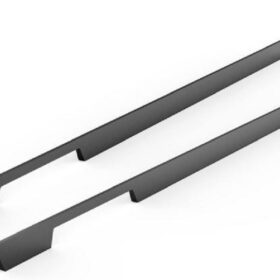Installing and Maintaining Kitchen Aluminum Profiles- A Guide
Installing and Maintaining Kitchen Aluminum Profiles: A Comprehensive Guide
Introduction
Kitchen aluminum profiles, with their sleek finishes and durability, have become increasingly popular in modern kitchen designs. To ensure their long-lasting beauty and functionality, proper installation and maintenance are essential. This comprehensive guide will provide you with step-by-step instructions for installing and maintaining kitchen aluminum profiles, covering every aspect from measuring to cleaning.
Measuring and Cutting
1. Accurately measure: Use a measuring tape to determine the length and width of the area where the profile will be installed.
2. Mark the measurements: Transfer the measurements onto the aluminum profile using a pencil or marker.
3. Cut the profile: Use a miter saw or a hacksaw to cut the profile to the desired length. Make sure to hold the saw steady and follow the marked measurements precisely.
Installing
1. Apply adhesive: Apply a thin layer of adhesive to the back of the aluminum profile. Use a high-bond construction adhesive that is specifically designed for metal surfaces.
2. Align and press: Align the aluminum profile with the marked area and press it firmly against the surface. Use a level to ensure a straight installation.
3. Secure with nails: To enhance the stability of the installation, use small nails or screws to secure the aluminum profile to the surface.
Maintaining
1. Regular cleaning: Wipe down the aluminum profiles regularly with a damp cloth to remove dust and dirt. Avoid using harsh chemicals or abrasive materials that could damage the finish.
2. Spot cleaning: For stubborn stains or grease, use a mild detergent or a specialized aluminum cleaner. Apply the cleaner to the affected area and gently scrub with a soft brush.
3. Protective coating: To protect the aluminum profiles from moisture and oxidation, apply a protective coating or wax. This coating will help maintain the shine and prevent premature aging.
Troubleshooting Common Issues
1. Loose profiles: If the aluminum profiles become loose, remove them and reattach them with new adhesive and nails or screws.
2. Scratches or dents: Superficial scratches or dents can be repaired using a metal polish or a touch-up paint that matches the original finish.
3. Corrosion: If corrosion occurs, it is essential to remove the affected area with a wire brush and apply a corrosion inhibitor. Regular cleaning and maintenance can help prevent corrosion.
By following these detailed instructions, you can ensure a successful installation and long-lasting maintenance of your kitchen aluminum profiles. Their elegant appearance and durability will enhance the aesthetic appeal and functionality of your kitchen for years to come.
-
2024-11-29Top Trends in Modern Kitchen Cabinet Pulls for 2024
-
2024-11-28The Ultimate Guide to Modern Kitchen Cabinet Pulls- Materials, Styles, and Tips
-
2024-11-27Elevate Your Kitchen Design with These Must-Have Modern Cabinet Pulls
-
2024-11-26Sleek and Stylish- The Best Modern Kitchen Cabinet Pulls for a Contemporary Look










